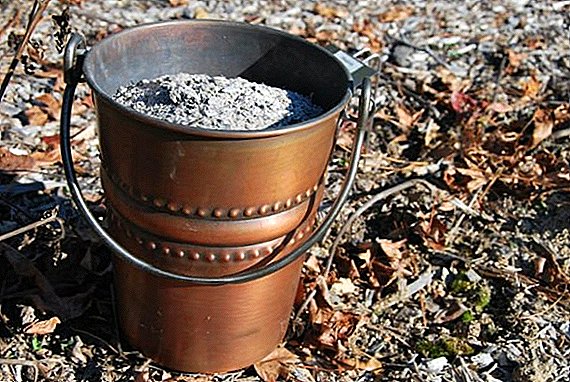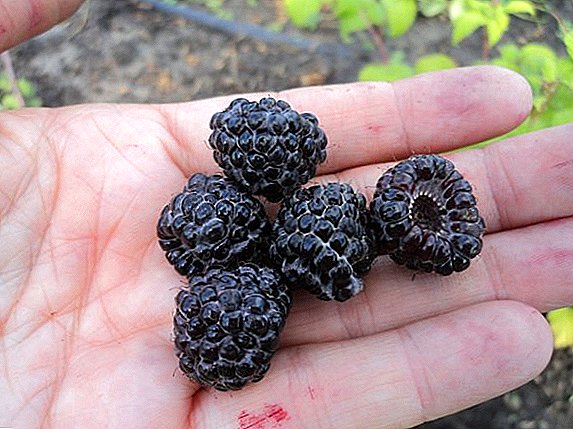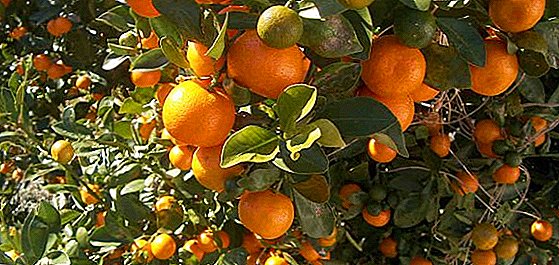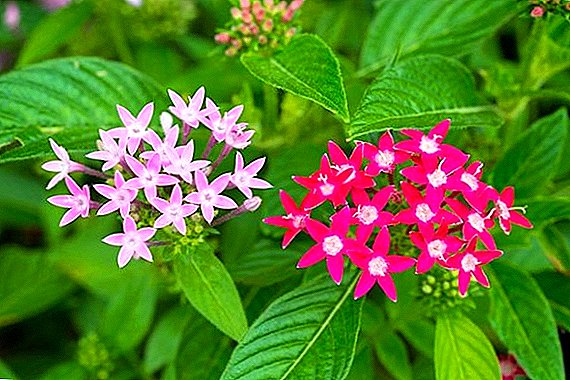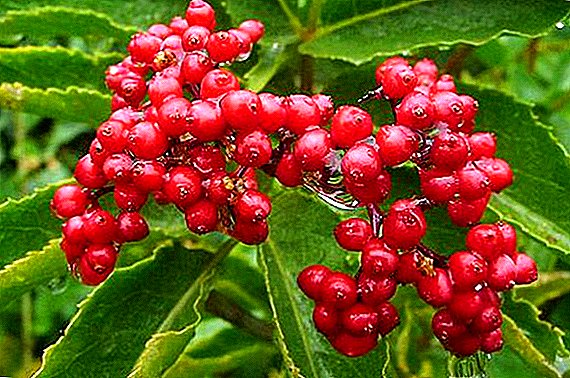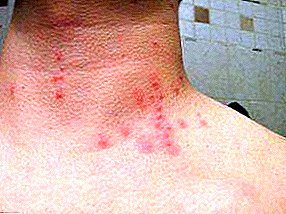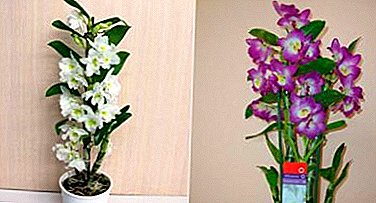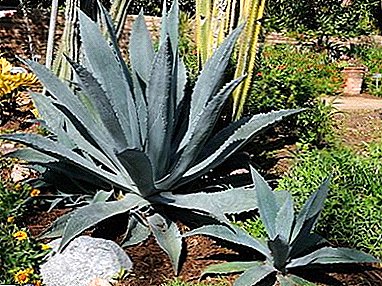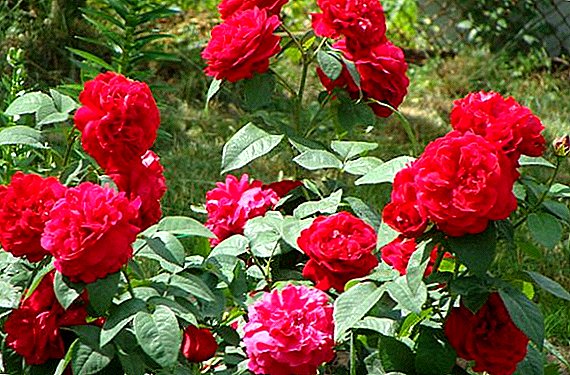 Rose - the perfect decoration of any garden. Saturated color buds are in perfect harmony with the bright green of the bush. Many gardeners dream to plant this flower in their area, but it seems to them that he is not able to survive the harsh climatic conditions of our region. Yes, most types of roses love heat. But modern breeders put a lot of effort and created cold-resistant varieties. These include the rose "Benjamin Britten".
Rose - the perfect decoration of any garden. Saturated color buds are in perfect harmony with the bright green of the bush. Many gardeners dream to plant this flower in their area, but it seems to them that he is not able to survive the harsh climatic conditions of our region. Yes, most types of roses love heat. But modern breeders put a lot of effort and created cold-resistant varieties. These include the rose "Benjamin Britten".
History of the variety
The grade "Benjamin Britten" is included into group of the grades united by one name - the English rose. They were bred by English breeder David Austin.  He wanted to preserve the beauty of the rose bud of old varieties and their rich aroma, but to make the plants more resistant to diseases and temperature extremes. So far, his latest brainchild is the rose "Benjamin Britten", bred in 2001.
He wanted to preserve the beauty of the rose bud of old varieties and their rich aroma, but to make the plants more resistant to diseases and temperature extremes. So far, his latest brainchild is the rose "Benjamin Britten", bred in 2001.
English roses also include such varieties as David Austin rose, Abraham Derby rose, Mary Rose rose, Rose to Graham Thomas, Rose William Shakespeare, Rose Falstaff.Her working name was AUSencart. The flower is obtained by crossing "Charles Austin" with other varieties.
Did you know? This variety of roses was named after the world famous English composer and conductor Edward Benjamin Britten.
Features
This variety has all the features of English roses:
- frost-resistant;
- resistant to many diseases;
- rich aroma;
- lush flowering;
- decorative

In addition, the variety is famous for:
- rapid growth;
- abundant bloom throughout the season;
- exclusive unusual color;
- wine and fruit notes in flavor.
Description
Variety refers to the scrub (Shrub) - a type of shrubs with semi-varieties. The highlight of these shrubs is the possibility of their use in vertical and horizontal gardening.
Rose "Benjamin Britten" - a powerful plant that grows to 90-140 centimeters. Cases when the bush reached two-meter height were recorded. The width of the bush is about 70 centimeters.  The breeder attributed a brick red color to the variety. This shade is noticeable at the beginning of flowering. In its midst, it becomes crimson, and an orange tint may appear. None of the English varieties can not boast of such color.
The breeder attributed a brick red color to the variety. This shade is noticeable at the beginning of flowering. In its midst, it becomes crimson, and an orange tint may appear. None of the English varieties can not boast of such color.
The flower is large, 10-12 centimeters in diameter. Often forms inflorescence. Bud opens gradually, revealing at the same time a cup-shaped socket. When the plant blooms, yellow stamens become slightly visible in the flower. They shade the core of the bud.
Rose bushes bloom all season, exuding a bright, sweet fruit aroma of pears and wine.
Did you know? Most varieties of roses are preserved and propagated by grafting buds and cuttings on dogrose.

Landing
The variety of roses "Benjamin Britten" can be considered unpretentious. Of course, this does not mean that it can be planted anywhere and not take care of it.
The best time to plant is spring.
A shrub planted at this time will have time to take root and grow strong before winter, and then it will be easier to endure low temperatures:
- Before you start planting need to prepare the soil in the selected area. It is loosened and fertilized, mixed with humus. Set neutral acidity.
- Next, dig a hole measuring 50 x 50 centimeters. If several flowers are planted, then the distance between the pits is half a meter. A bucket of water is poured into the pit the day before landing.
- We prepare a sapling for planting. First, it is kept immersed in the root-forming mixture, and then in settled warm water during the day. And only after that they land.
- When planting, the bush is kept flat and sprinkled with excavated earth mixed with bone meal and humus. Grafting seedlings should be underground at a depth of 7-10 centimeters.
- The next day, the young plant is watered and spud.

The soil
Roses love drained loamy soil with an acidity of pH 5.5-6.5. Acidity can be adjusted independently. If it is low, then add lime (0.5-1 glass). If elevated - peat or coniferous humus.
You can also adjust the clay and sandy soil. With increased clay content in the ground, sand is added, and vice versa. The roots of the plant need free access of oxygen, so after rain and watering, as soon as the moisture is absorbed, it is necessary to plow the ground around the bush. 
Location
"Benjamin Britten" is a light-loving flower, so it needs to be planted in the sunny part of the site without a hint of shadow, otherwise you will not be able to admire the beauty of flowering. Blossom later and less abundantly.
Also, the place should be protected from drafts and flooding with melt and groundwater. 
Care
The main feature in the care is moisture control. No species of English rose likes high humidity.
Learn about rose care in the fall and how to prepare for winter.
Watering
Watering should be good, but only as the top layer of soil dries around the bush. When it rains heavily, after their completion, it is advisable to shake off moisture from the flower, as this can cause decay. It is desirable to shake off dew. 
Top dressing
When the plant wakes up from hibernation, it is fed with special fertilizers for roses. In June, when the leaves begin to grow actively, they make nitrogen fertilizers. Phosphate fertilizers and calcium need to feed at the time of formation of buds.
Phosphate fertilizers include "Double superphosphate", potassium monophosphate, superphosphate.At the end of the summer, add a little potash. Florists recommend using special fertilizers for roses: for example, "ASB Greenworld".
 Differs in duration of action. It is used every three months. One pack can feed 100 roses.
Differs in duration of action. It is used every three months. One pack can feed 100 roses.Important! The dosage of fertilizer must be strictly followed. How much feed can be applied should be indicated on the package.
Pruning
The rose "Benjamin Britten" by nature laid the formation of a beautiful bush, so she does not need regular pruning. It is only necessary to direct the branches to form a certain type.
If you want your fragrant beauty to bloom with huge flowers and not be tall, then you need to shorten the shoots by half. If you need a tall bush, densely covered with flowers of medium and small size, then the shoot should be shortened by a third and selectively.  Such pruning can be called weak. It is held in the spring, before the appearance of the kidneys.
Such pruning can be called weak. It is held in the spring, before the appearance of the kidneys.
More should be preventive pruning. Such light pruning is necessary in the spring in April and in the autumn at the end of flowering. During this procedure, weak, small, painful, withering shoots are removed. It is also recommended to remove lignified stems.
Only freshly planted flowers need strong pruning. When the plant takes root, it is thinned. Leave only three or four stalks. Pruning of the shoot is similar to a weak pruning.
Wintering
This variety of roses frost-resistant.
To frost-resistant varieties include such as rose from Lady Rose, rose patio, rose "Pierre de Ronsard", rose "Chopin", pink rose "Bonica 82".In his homeland, in England, he winters without shelter. But the climate of foggy Albion is mild, so in our latitudes it is recommended to monitor the behavior of plants and the weather.
 If a severe winter is predicted, it is better to dig in the roots of the plant and cover it with a special material. Remove the shelter should be with the arrival of spring and very carefully, so as not to damage the bush.
If a severe winter is predicted, it is better to dig in the roots of the plant and cover it with a special material. Remove the shelter should be with the arrival of spring and very carefully, so as not to damage the bush.Important! Youngsters, who will spend the first time wintering, must cover.
Diseases and pests
Rose brought out resistant to diseases and pests. The only thing she can suffer from is black spot or marssonin. This is a fungal disease that affects mainly the foliage, less often the stems.
Manifested in the form of purple-white round spots on the outside of the leaf. Over time, they turn black, and dark veins appear on the spot. The diseased leaf changes in color, becomes gray-brown, twists and falls.
The fungus is activated due to high humidity, it begins to spread from below. The first signs of the disease can be found in June-July, if the plant is weak. The fungus appears on stronger flowers only in August-September.  To fight should use drugs based on mancozeb ("Profit", "Ridomil Gold") and drugs containing triazole ("Topaz", "Skor"). It is necessary to spray it with one or another means. The procedure should be carried out no more than three times a week, always at intervals.
To fight should use drugs based on mancozeb ("Profit", "Ridomil Gold") and drugs containing triazole ("Topaz", "Skor"). It is necessary to spray it with one or another means. The procedure should be carried out no more than three times a week, always at intervals.
For prevention, use copper sulphate. Dilute 50 g of the mixture in a liter of water and irrigate the plant twice a year: before the budding and before hibernation. You can use the simplest means - onion peel.
Boil 30-40 g of husk, leave for 6-8 hours and irrigate the bush. Also, a decoction to water the plant.
As you can see, to grow a fragrant and beautiful flower is not difficult, and if you follow the basic rules for the care, "Benjamin Britten" will be pleasing to the eye for years.


